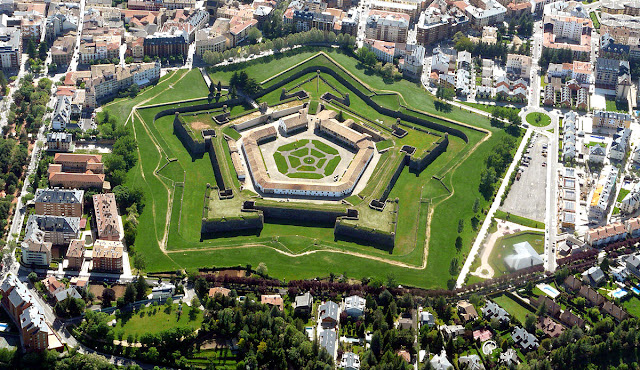The Spandau Citadel, Berlin
Spandau is a short drive from the center of Berlin but can
sound like a different century. Kiez (Berlin district) was once her own city.
Sitting at the confluence of the Havel and Spree rivers,
this settlement dates back to the seventh or eighth century and the Slavic
tribe, Hefele. They need to protect their growing city, they built a castle,
today Zitadelle Spandau. Not only is it a beautiful attraction and site of some
of Berlin's unique history, it hosts numerous festivals and events throughout
the year. A look into the history of Zitadelle Spandau and its best features
today.
History of the Spandau Citadel (Zitadelle)
 After its construction in 1557, Swedish forces were the
first to blockade the castle. However, it was not until 1806 that Napoleon's
army invaded the castle first. The site was in desperate need of repair after
the battle. Slowly it was rebuilt and the city grew around and merged into
Greater Berlin in the 1920's. Castle defenses were then used to keep people
inside rather than being prisoners of the Prussian state prisoners. Ultimately,
the castle found a new purpose as a military research gas laboratory in 1935.
After its construction in 1557, Swedish forces were the
first to blockade the castle. However, it was not until 1806 that Napoleon's
army invaded the castle first. The site was in desperate need of repair after
the battle. Slowly it was rebuilt and the city grew around and merged into
Greater Berlin in the 1920's. Castle defenses were then used to keep people
inside rather than being prisoners of the Prussian state prisoners. Ultimately,
the castle found a new purpose as a military research gas laboratory in 1935.
He took a more active role in the World War II war effort as
a line of defense during the epic battle in Berlin. Unable to conquer its
walls, the Soviets were forced to negotiate surrender. After the war, the
Soviet forces occupied the castle until the formal partition and ended Spandau
in the British sector. Despite persistent rumors, it was not used as a prison
for national socialist war criminals such as Rudolf Hess. They were housed
nearby in Spandau Prison. This site has since been demolished to prevent it
from becoming a shrine for neo-Nazis.
Today, the fighting days in the castle and the site are
decorative. Opened to the public in 1989, it is one of the best-preserved
Renaissance castles with the Julius Tower bearing the title of the oldest building
in Berlin (built around 1200).
Attractions at the Spandau Citadel (Zitadelle)
Visitors can cross the bridge over the trench and the castle
grounds to enjoy the impressive tower and walls. It is difficult to visualize
the dynamic shape of the castle from the ground, but the images help illustrate
its unique rectangular shape with four corner bastions.
The former shipyard house is the site of the Spandau Museum
that covers the entire history of the region. The house of the former commander
houses a permanent exhibition in the castle. In the Queen's stronghold, 70
Jewish tombstones can be seen in the Middle Ages by appointment. Works to
change young and artisan artists and even puppet theater are available at
Bastion Kronprinz. A new permanent exhibition entitled "Undiscovered -
Berlin and its landmarks" showing features that were removed after the
political changes. Returning to the open air, the Zettadel Theater offers
theatrical performances and events on the patio. Watch the busy calendar of al
fresco parties like the summer music festival Castle. On a sunny summer day,
take a break in Biergarten (or check out one of the best biergartens in
Berlin).
For something slightly darker - literally - enter the bat
vault. About 10,000 native bat use the castle as their winter home and visitors
can observe the animal and learn more about their habits here.







0 Comments